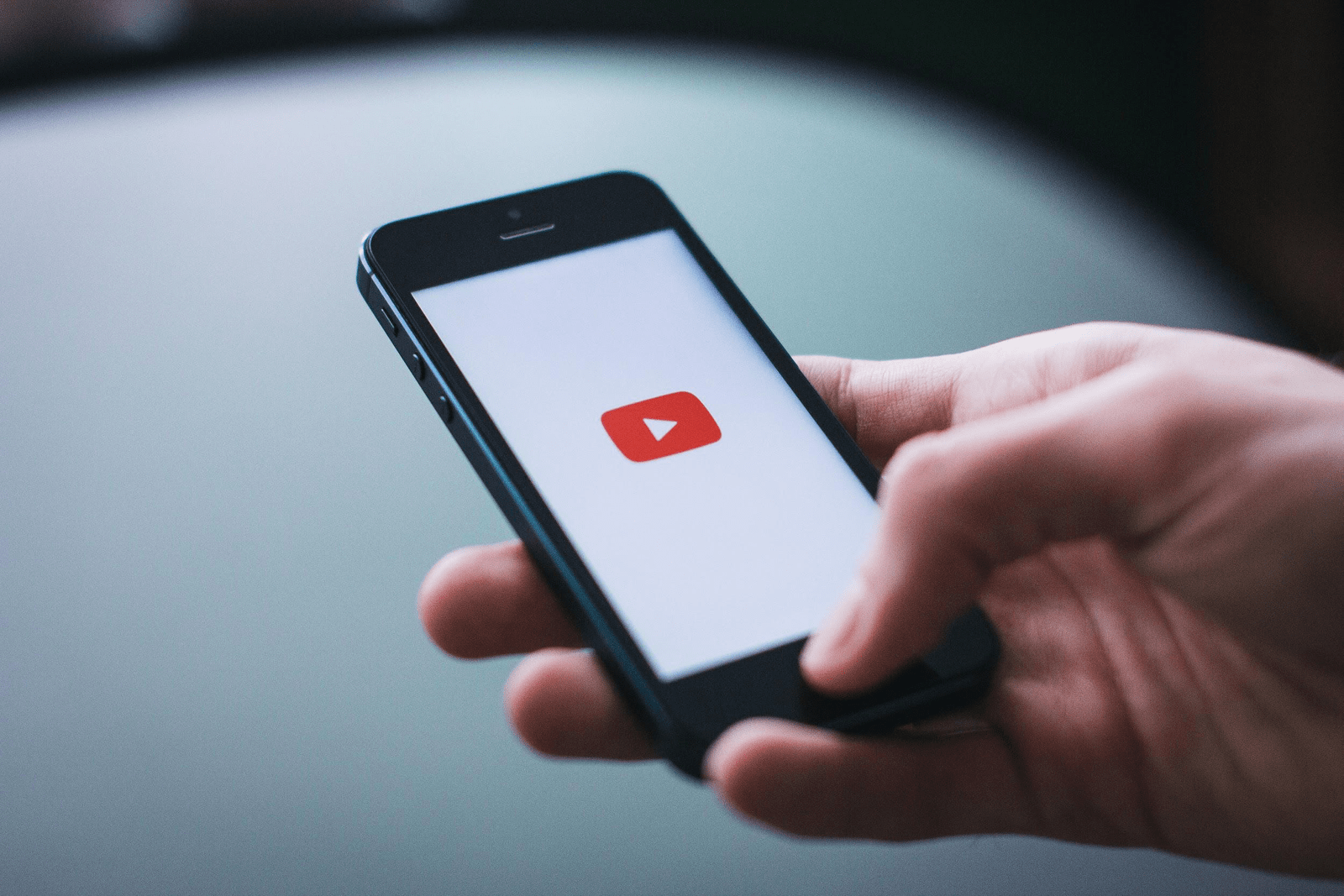Once upon a time, families would gather around a TV set to watch their favorite programs. In the early days of network television, there were 3 channels. In the early days of cable, there were 20. Viewers had remote controls that didn’t always work—and when they didn’t, people had to get up and change the channel themselves.
There was no pausing the TV, no fast-forwarding through commercials, no DVR. You watched your show during its regular time slot (unless you were lucky enough to record it on VHS) and sat through all the commercials. There were no other options.
It was a different world. The scary part? We aren’t just talking about the 1950s. A lot of those points apply to the state of video and television entertainment within the last 20 years.
Today, with streaming platforms taking the world by storm, there’s no need to watch actual cable TV—with the rise of Hulu, Sling TV, Firesticks, and other applications, an increasing number of people are opting to not have digital cable at all.
Not only that, but sitting through commercial breaks has largely become a relic of the past, which has forced businesses to branch out from more traditional means of advertising their products.
Enter video marketing.
Beginning with the founding of YouTube in 2005, watching videos online has grown from an entertaining pastime to the most profitable tool for businesses to get their name out there. And it shows no sign of slowing any time soon.
Consider these facts:
- 85% of all internet users regularly watch videos online
- 72% of consumers would rather learn about a product by watching a video than reading about it
- Nearly half of all internet users search for a video about a new product or service before making a decision to buy
- Video viewings on mobile devices are increasing by 100% year over year
You can visit the whole study here, but more than likely, you get the idea: Video is huge…and if your company isn’t taking advantage of it as a marketing tool, you’re missing out.
So, what is video marketing, and why is it so effective? Let’s explore why video emotionally engages with prospects like no other medium, the scientific and biological basis for our attraction to video, and things to keep in mind if you’re going to put this bullseye of a technique to work for your business.
5 Reasons Why You Need Video Marketing

1. Science says it works
Biologically, humans are a visual species. What we experience through sight makes up 83% of our experience of the world, with hearing ranking second at 11%.
This explains why video marketing is so effective: the things we see and hear are the things that make the greatest impact on us. In fact, people are 12 times more likely to watch a video than they are to read a piece of text.
Not only that, but other studies confirm that video helps us to remember things better. In one study, participants were asked to describe a video advertisement they had seen in the last month. 80% of participants were able to remember at least one.
The science behind video marketing goes beyond humans being visual learners. Video has also been proven to be more effective at making emotional connections—which is, of course, what good marketing is all about.
Watching a story-driven video causes the brain to produce more oxytocin, a neurochemical that is released when people experience kindness or empathy.
This is proof of why it’s so important to tell your customer’s story in your marketing efforts: feeling understood triggers these emotions.
But the value of story and its relationship to brain chemistry doesn’t end there. Oxytocin is also associated with cooperative behavior, which is why some stories can serve as inspiration for people to take steps to develop new habits or make life changes.
Did watching Rocky make you want to whip yourself into shape and run up a massive flight of stairs? Did the hit documentary Won’t You Be My Neighbor make you want to spread kindness like Mr. Rogers?
If you can think of a time a movie motivated you to take action, you’ve experienced the science of stories.
Stories in general are known to have this effect—but seeing the story unfold in a video triggers it on a stronger level than simply reading it in an article or book.
That’s a big reason why you should use video marketing: it creates an emotional bond not only with the story…but with your brand and your product or service.
2. It communicates the message faster
The best videos are short, to the point, and don’t waste a single shot. If marketers do it right, it takes less mental effort to watch a video than it would to read the exact same text in print.
This has a lot to do with attention span. Our attention span as a society has decreased dramatically, from 12 seconds in 2000 to just 8.25 seconds in 2015. This means that we now have shorter attention spans than goldfish, which are estimated at 9 seconds.
The point is that if we are primarily visual and auditory creatures, the best marketing is going to nail those senses as a way to get us to pay attention and stay focused.
Would it surprise you to know that company status or position doesn’t change anything? 59% of business executives say that given a choice between reading a report and watching the same information, they would rather see a video.
Not only that, but video also helps with retaining information. One study revealed that 85% of consumers who watched a short explainer video eventually ended up buying the product.
Why is video marketing so effective? Videos make it easier for consumers to remember who you are—and that makes them buy more.
3. It gives you better SEO and search engine results
It’s a fact: websites with videos show up more frequently in Google searches. This is because watching them causes visitors to stay on your website longer, which sends a signal to search engines that your content is trustworthy.
But here’s the real kicker—you’re 53 times more likely to show up first in a Google search if you have a video embedded in your site. Also, don’t forget about the fact that Google owns YouTube, which makes the connection between video and search results even more potent.
Similarly, videos can also help improve your search engine optimization (SEO) results because there are so many places to put keywords. So, think about broadening your keyword inclusion as you SEO your videos.
Come up with interesting video titles that include keywords, put them in the video description, in your tags, and even in the transcription of the video itself.

4. It encourages shares on social media
YouTube may be the first platform that comes to mind when people think of watching videos online…but nearly half of consumers go to Facebook to get video content.
Not only that…but the majority of consumers who view a video ad for a company visit that company’s website afterward. This makes it possible for them to not only opt in through a lead magnet or other free offer, but be retargeted as well.
So, what does this mean for you? It’s just another reason why you need video marketing…particularly on social media. Because of reasons we’ve already talked about—like our attraction to visual content online—people are just more likely to share videos than images or text.
In fact, Facebook posts and ads containing video produce as much as 1,200% more shares compared to those that simply include images with text.
The more videos you share on your Facebook page, the more people will share them in return…which means more exposure and engagement for you.
5. It simply converts better
When YouTube was first getting off the ground, online videos were more of a novelty than anything else. Now, they’re an essential tool for any business that wants to get ahead.
Video marketing, simply put, is the highest converting medium you can use to promote your business online—71% of business owners report that videos convert better than any other tool.
This is because video content naturally leads people to explore other areas of the website, and the results are often staggering.
For example, the housewares website StacksAndStacks.com showed that visitors were 144% more likely to buy something after watching a short video about the company.
Another reason why video content converts better ties into the emotional impact of the stories it tells. We mentioned this earlier, but this point really is just that critical…
Seeing the product or service in action ultimately brings a personal touch to a distant company or topic—which creates greater trust in the brand.
But it isn’t enough to just make a cool video and throw it on Facebook. There’s more to marketing with video than that, which is why you need our…
5 Ways To Win With Video Marketing

Know What Your Goals Are
Video marketing may use many of the same tools and tactics, but because the goals of marketing campaigns differ depending on the brand and context, the strategy will always be a little different.
That’s why it’s so critical that before you start planning your video, you know what your goals are.
This includes being aware of not only what kind of video you’ll be making, but what emotion you want viewers to experience and how that ties in with your product.
So for starters, in what stage of your funnel does this video appear? Are you trying to generate leads? Sell a product? Educate viewers about their key problem to prime them to see how your product is the solution?
Hand in hand with the goal of your video is what action you want viewers to take after they watch it. Do you want them to sign up to get a lead magnet? Make a purchase? Schedule a call with a representative?
Whatever the call to action is, you need to plan how your video will motivate them to take that step.
Furthermore…how do you want your audience to feel? Do you want to draw them in with humor? Make them feel concerned about an issue related to your product or service? Create an emotional tear-jerker? Obviously, the emotional tone you choose will have to fit with your goal, too.
To get started, clearly establish these goals and strategies. They’ll literally make or break your video and are your best bet to create a unified, winning piece of content.
Use Video Throughout The Entire Funnel
Too often, businesses make the mistake of lumping videos solely into the awareness stage of the funnel, making only informative content to educate prospects about their product or service.
These videos definitely have their place and the initial stages of the funnel is right where they belong. But if you aren’t using video throughout every stop prospects make in your funnel, you’re not using it to its fullest potential.
Especially since video is clearly the frontrunner in content that converts.
Videos don’t just belong on your homepage as a tool to welcome viewers to your site. They literally belong everywhere, and they especially belong on lead pages.
Any time you present a place for viewers to buy or opt in for something, you need a video. Remember: when people view videos about products, they’re naturally more likely to buy.
If anything, the fact that your funnel exists to begin with is a big reason why you should use video marketing. It literally gives you a step by step guide for what your goals should be and how to best impact your audience.
Optimize It For Easier Viewing
85% of internet users watch videos on Facebook with the sound off.
It seems kind of counterintuitive, doesn’t it? After all, didn’t we talk earlier about how not just sight, but hearing are our dominant senses?
That might be true. But think about how many places people watch videos on Facebook where sound might not be socially acceptable: in bed next to a sleeping spouse or partner, at work when the boss isn’t looking, in the bathroom…you get the idea.
Clearly, you need to optimize your videos so people can still get the message even when sound isn’t an option. And you do that by providing subtitles.
Subtitles work just like closed-captioning on a TV: they’re a running transcript of what is being said in the video so people can follow along.
Of course, you always hope they’ll go back and watch the whole thing later, but if they don’t, at least they heard—or read—you loud and clear the first time.
You also have to consider that the majority of your viewers will be watching your video on a mobile device (78% to be exact), which means it needs to be optimized to fit this format.
The last thing you want is for part of your video to get cut off, which could confuse viewers and would definitely make your brand look like it doesn’t know what it’s doing.

Don’t Make It Too Long
Remember that somewhat depressing bit about how we officially have shorter attention spans than goldfish? That’s a really important fact to keep in mind with making your video.
The truth is, video marketing isn’t the Oscars. Your viewers don’t have the time or mental capacity to watch Gone With The Wind on your website.
Your video has to be a quick 1-2 punch to deliver the message and hopefully accomplish the goal you laid down before you made it.
So what’s the length to aim for? Guess what: like any other aspect of this process, that’s going to depend on where your prospects are in the funnel.
If you’re making a quick video designed to create awareness of your brand, you’ll want to aim for about 30-60 seconds—the length of an average TV commercial. Remember: at this point, your prospect doesn’t really know who you are. They may not even know they have a problem, let alone that you’re the solution!
Therefore, don’t overwhelm them with a Shakesperian epic about your product or service. Give them just the facts and make it engaging.
However, let’s say you’re dealing with someone who is further along in the funnel—maybe they’ve made it through the lead magnet and tripwire and have been sufficiently primed for your core offer.
If that’s the case, you’ll need more time to sell them on the benefits of the product so they can see the value they’re getting for their money.
Some video sales letters for high-ticket items can run as long as 10-15 minutes—and yes, people will watch them because they’re far enough into the funnel that they don’t have to be sold on the effectiveness of the brand.
Why is video marketing so effective? It happens when you look at where your key audience is in the funnel and what transactions they’ve made with you so far, if any. Then, leverage that stage to zero in on the right time frame for the video.
Humanize the Content
We really can’t say this enough.
Tell a story.
Speak to your viewers’ experiences.
Show them their desired end result.
Create empathy.
Humanize everything.
Think about it this way. There are a lot of businesses out there—but yours is different. Your job is to speak to your viewer’s personal situation to demonstrate how and why.
What’s the main way to do this? Focus on the story, not the sale.
Focus on your message, not money.
That’s why it’s so important to illustrate through your videos that you understand your prospects’ current emotional state. You know what their feelings are, what their average day is like. Show them that. Then show them how you can help them change.
This is a cardinal rule of any form of content marketing….but consider why video marketing is so effective at converting sales, it becomes especially crucial that yours is telling the right story to the right people.

This post covers a LOT about why video marketing is so effective and why you need video marketing…but believe it or not, we’ve barely touched on these ideas. Cirius Marketing has tons of great resources, including our Double Your Sales Review, for helping you identify how video marketing can work for you and your brand.
To learn more, give us a call at (855) 607-7766 or e-mail hello@ciriusmarketing.com.
